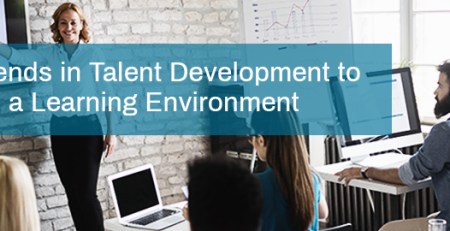Increase Employee Retention Through Employee Wellness
The concept of employee wellness and wellness at work is changing and evolving to better suit the needs of our modern workforce and keep employees happy and healthy. Employees are the backbone of a business, they keep everything running smoothly so it is paramount to ensure that employees feel like they are being taken care of by their company, especially when it comes to retaining talent. 96% of talent professionals agree that employee experience is becoming increasingly important to enable their employees to produce not only their best work, but to feel good about their work and themselves too. Everyone wants to feel important and supported at their jobs and this is a principal aspect to consider when dealing with talent retention.
As the newer generations move into the workforce, the demand for better benefits, flexibility and a focus on not only physical wellbeing, but on mental health and stress reduction are on the rise. Employers need to adapt to meet the expectations of their employees in order to increase employee retention and reduce turnover.
A new trend in employee wellness that is taking the forefront by storm is tending– intentional relationship building with and amongst employees to increase the overall feeling of wellbeing and a safe workspace and a community within the company culture. Tending has been shown to increase talent retention and mitigate the feeling of workers as machines, which should be replaced with the sense of empowering people.
Tips to Get Started
As an employer, you can incorporate a variety of different components of wellness into a brand new employee wellness/wellbeing program including:
- Integrating mental health days or additional personal days
- Providing stress management programs
- Occasional on-site massage and meditation programs
- A “relaxing room” where employees can take a breather
- Consider certifying a few employees who are the right fit to become a “mental health first aid provider”
- Reduce the stigma around discussing mental, emotional, financial, social and physical wellbeing at work (after all, most of us spend at least 8 hours a day in the office, it should feel like an open and safe space for all employees)
- Offer flexible benefits including company provided counselling sessions
- Having designated social areas in the office where people can chat for a few minutes to take a break and build new relationships
- Team outings, events and activities can promote a morale boost and a greater feeling of social wellbeing and community
- Host a few lunch-and-learn sessions regarding the varying topics of employee wellness
- Send out surveys or schedule some time to ask employees personally what benefits and infrastructure they think would be most beneficial or that they’re most interested in
Key Elements
It is key to remember that a holistic approach is most effective when tackling employee wellness, as overall wellbeing extends to all areas of a person’s life from financial to emotional to physical. Employees need to feel wholly supported by their employers and a sense of having their best interests at heart.
Flexibility is also key as not everyone is the same or has the same needs. Diversity and inclusion are extremely important, especially when it comes to employee wellness. Ensuring that everyone has access to the resources that are right for them and their personal situation when they need it most is vital.
Focus on growth-employee wellness includes learning and growth opportunities for employees. In fact, 93% of employees say they would stay at a company for a longer amount of time if they felt that the organization was invested in their career development. This can include providing coaching, leadership development, talent development and providing talent development resources to employees seeking to advance and enhance themselves and their skills. Something as simple as showing your emerging leaders that you believe they will be the next generation leaders and providing them with the proper resources and space to do so can boost overall morale and reputation.
Physical workspaces can have a big impact not only on employee productivity, but on employee wellbeing. An office should feel like a different version of home, where employees can feel comfortable, but still motivated and focused on their work. This can be achieved through creating more contemporary and modern workspaces with open floor plans, treadmill and standing desks, a socializing area and an accessible outdoor space for when the fluorescents become a bit too much to handle.
When it comes to finances and wellbeing, enacting flexible benefit programs that include daycare, education, gym memberships, paternity leave and medical benefits are critical. Benefits can even be as simple as providing a Friday morning breakfast spread for all members of the staff to come together, enjoy a healthy and tasty cost-free meal and catch up with each other away from their desks. It makes employees feel appreciated and less likely to look for positions elsewhere when they see that the company cares for them personally-on a human level– as opposed to “just” a worker. Lifting a bit of the financial burden can do wonders for making employees less stressed overall as financial struggles, worries or burdens can take a big toll on employee’s wellbeing and work performance. Cutting costs by providing free coffee, team lunches and benefits can lead to a ripple effect of increased productivity and engagement at work.
Practice What We Preach
MHS likes to practice what we preach so we follow a lot of these employee wellness initiatives ourselves to make sure our employees feel inspired, satisfied and supported in their roles. We provide alternative workspaces, benefits, breakfast and luncheons, as well as immense opportunities for growth and development using our available talent development resources from the inside of our organization.
References:
– Biro, M. M. (2020, January 6). 3 HR Trends For 2020: What’s In Store. Retrieved from https://www.forbes.com/sites/meghanbiro/2019/12/26/3-hr-trends-for-2020-whats-in-store/#4ea456536f86
– Biro, M. M. (2019, November 22). 6 Employee Wellness Trends for 2020. Retrieved from https://talentculture.com/6-employee-wellness-trends-for-2020
– Ertman, M., & Darviche, S. M. (2015, September 23). Do You Know Who Holds Your Office Together? Retrieved from https://hbr.org/2015/09/3-steps-to-giving-office-housework-its-proper-due
– LinkedIn Learning. (2018). LinkedIn’s 2018 Workplace Learning Report. Retrieved from https://learning.linkedin.com/resources/workplace-learning-report-2018#trends
– LinkedIn Talent Solutions. (2020). 2020 Global Talent Trends. LinkedIn. Retrieved from https://business.linkedin.com/content/dam/me/business/en-us/talent-solutions/resources/pdfs/linkedin-2020-global-talent-trends-report.pdf
Visit https://storefront.mhs.com/collections/talent to learn more about how to further develop and manage talent in the workplace. Our range of Talent assessment tools are ideal for use in coaching, organization and leadership development, selection, and succession planning. Please contact us at [email protected] for any inquiries










